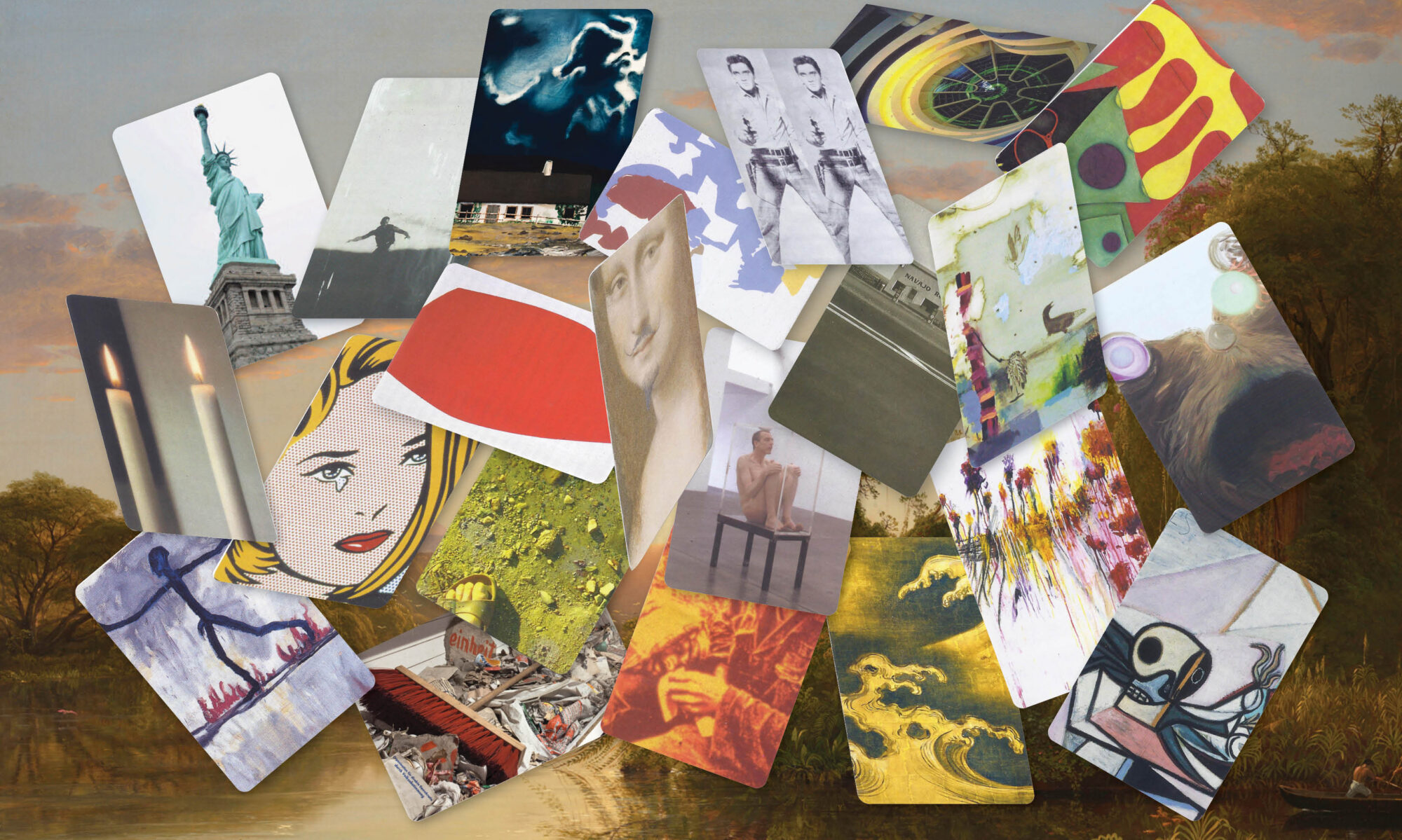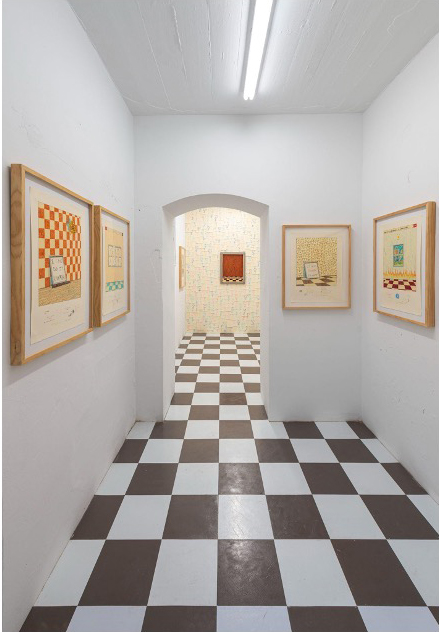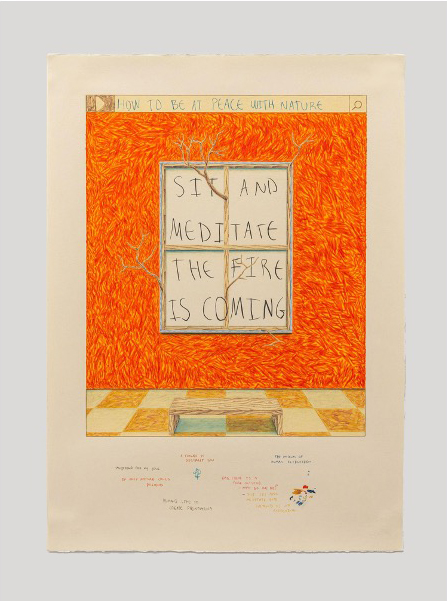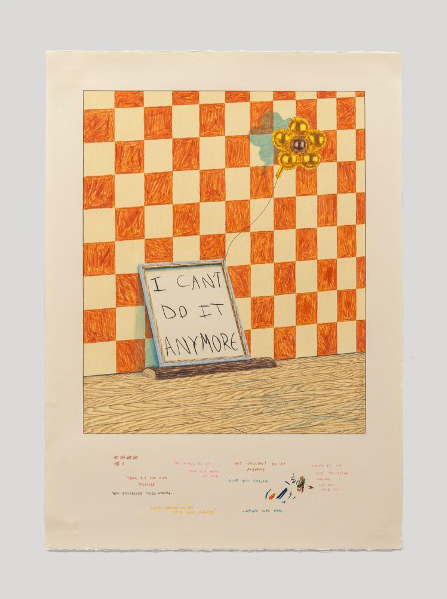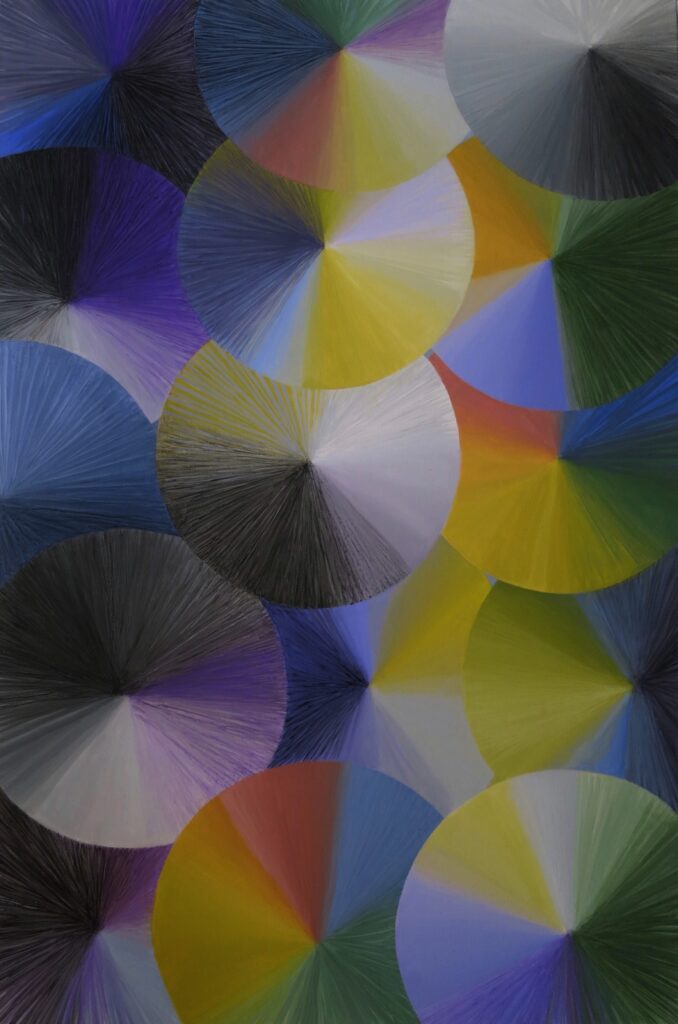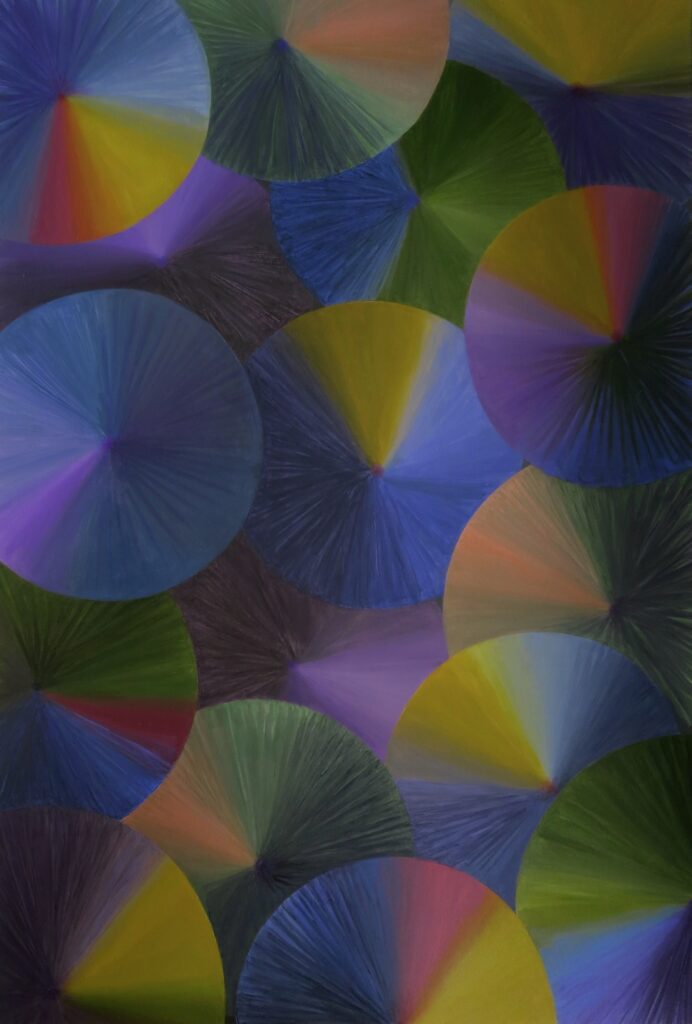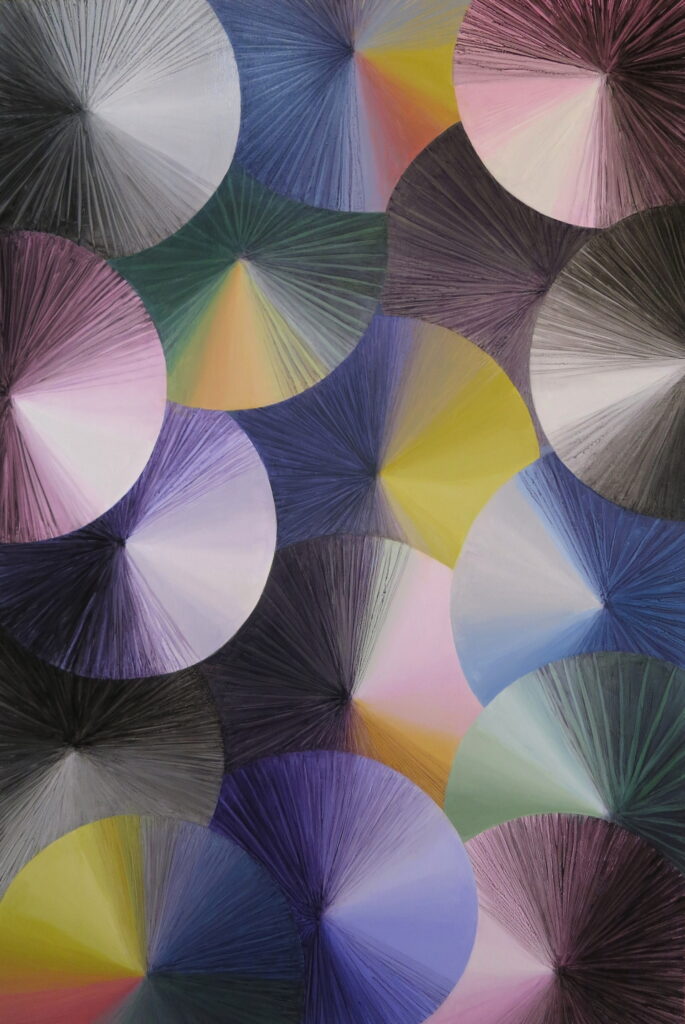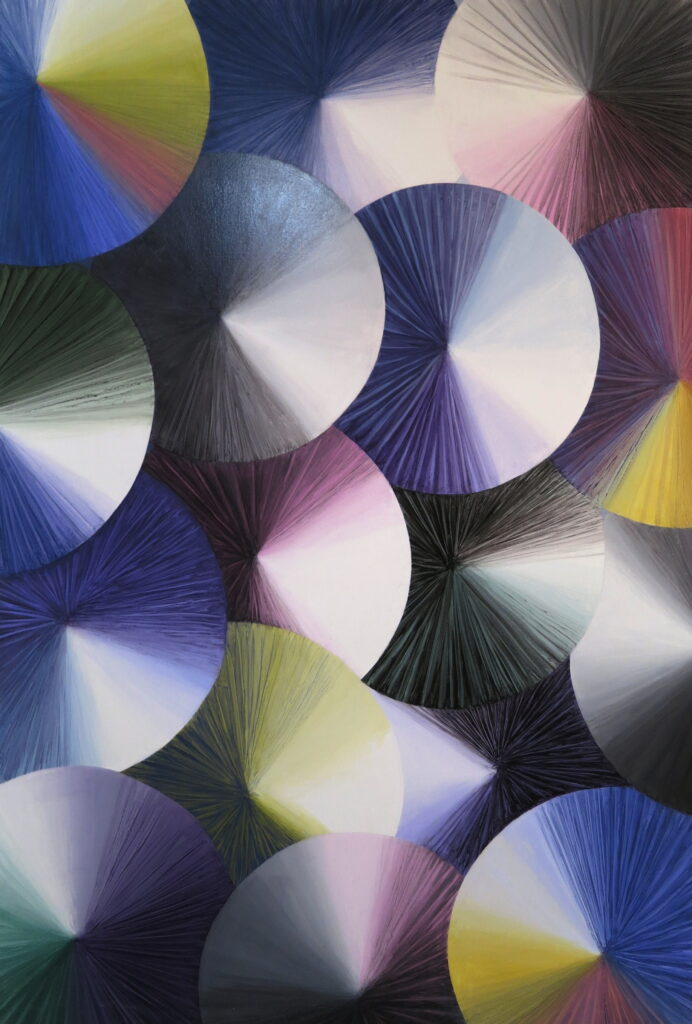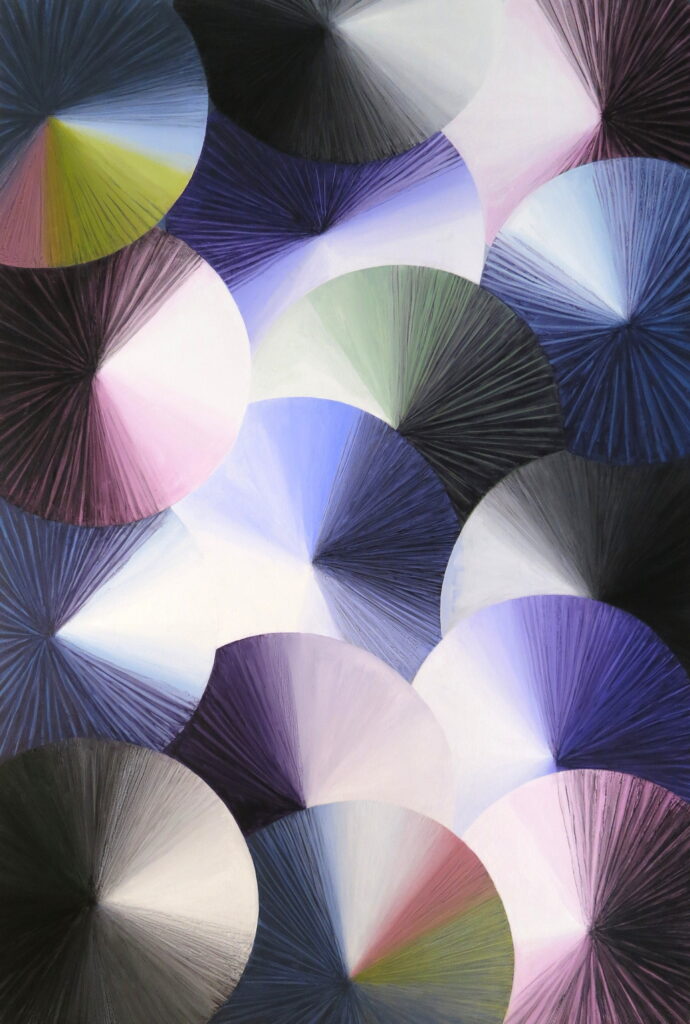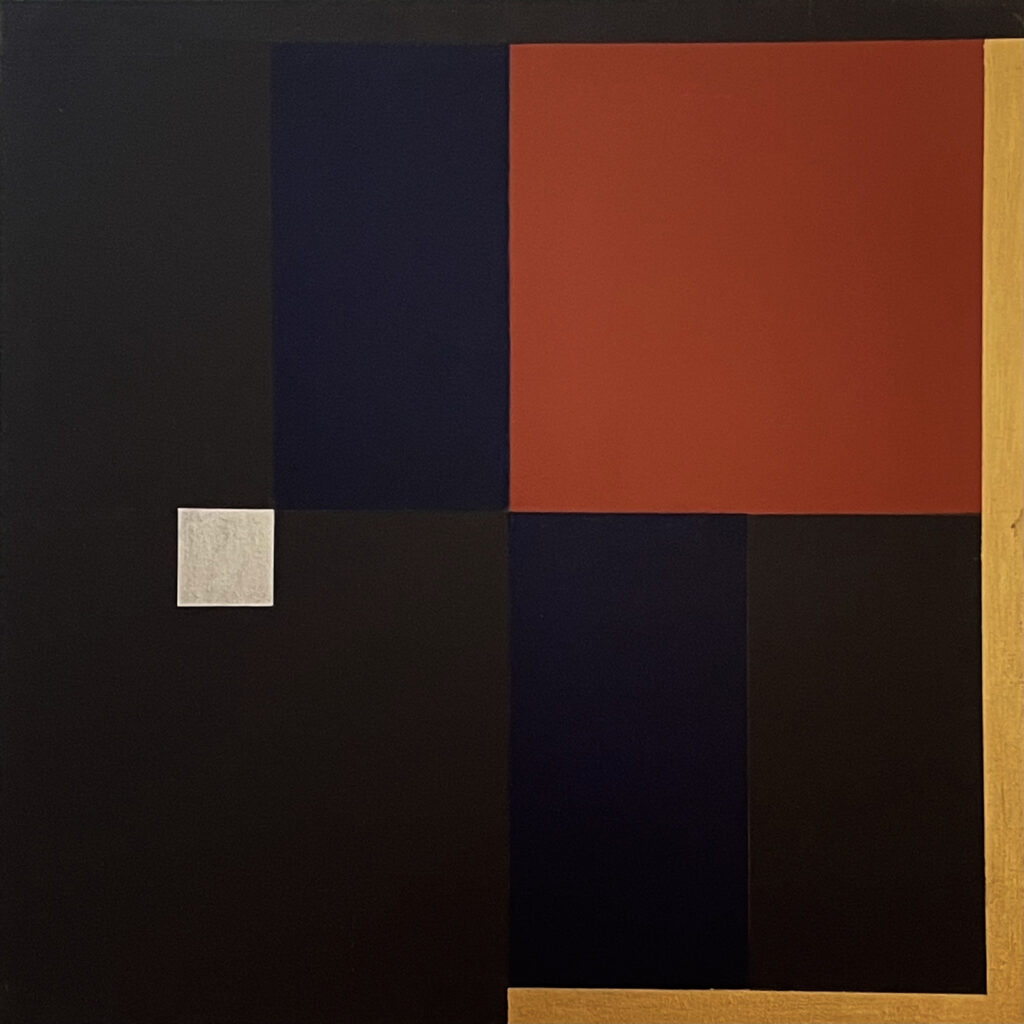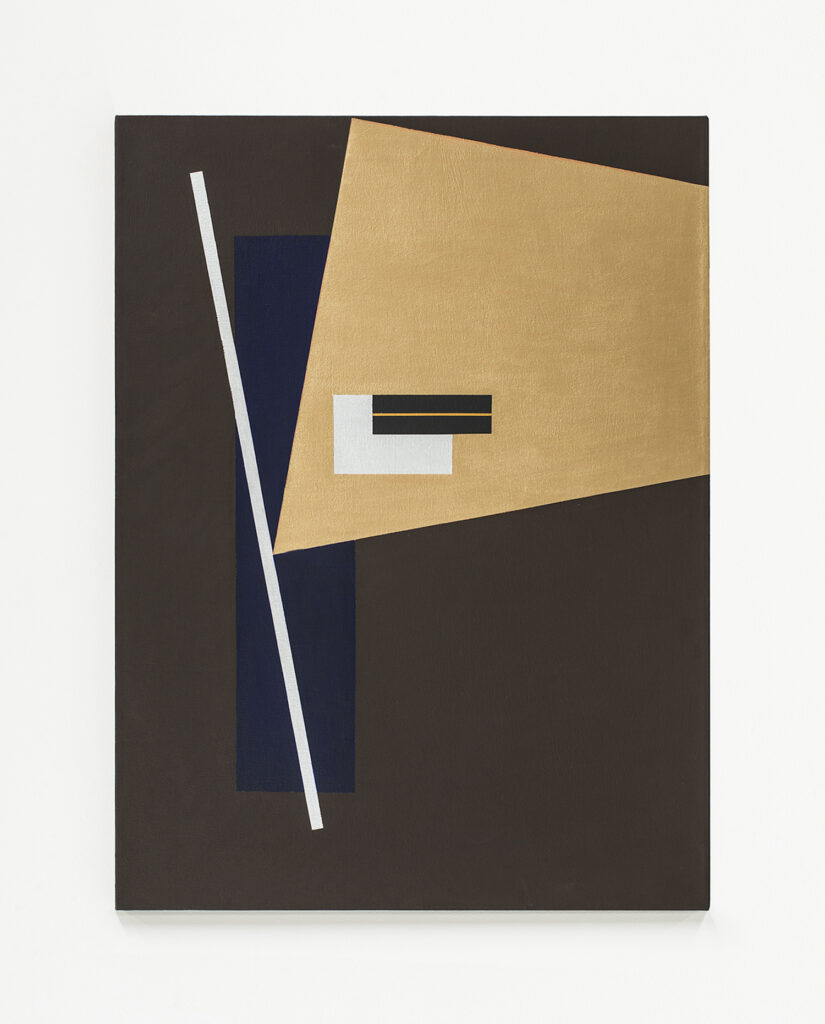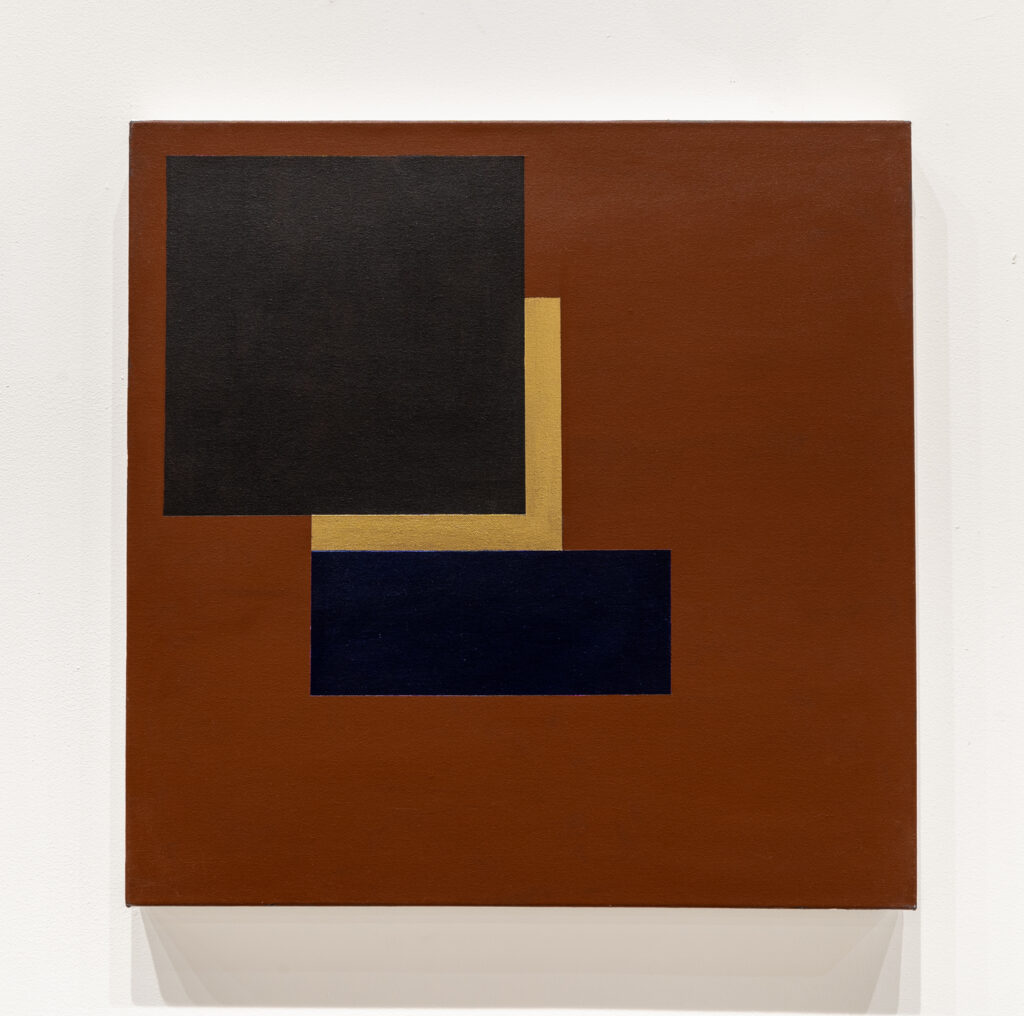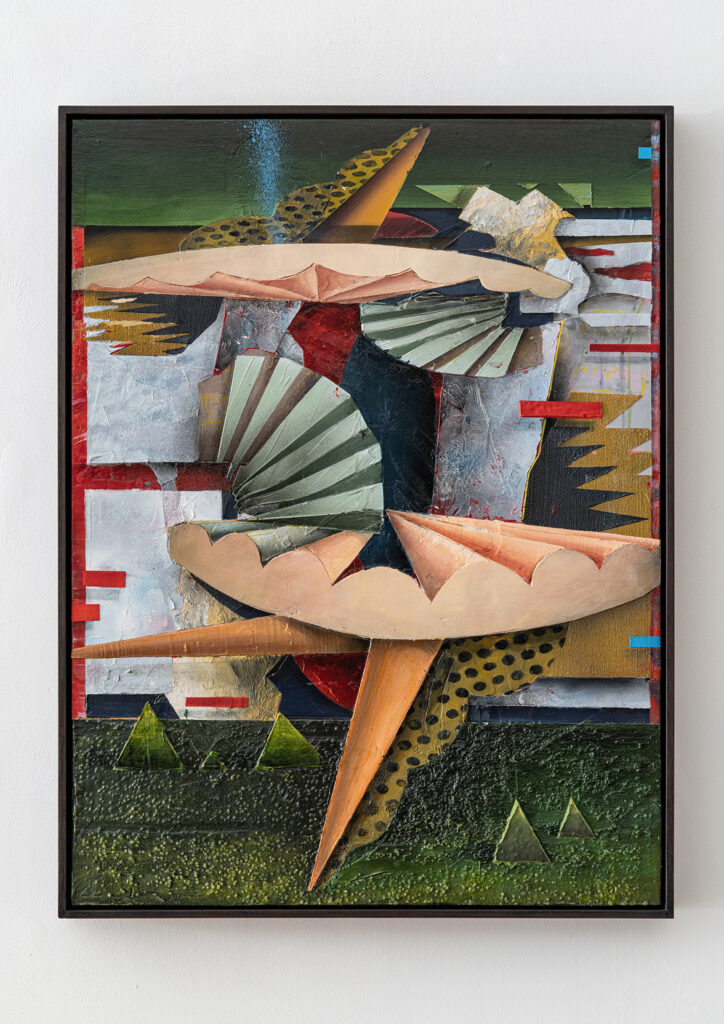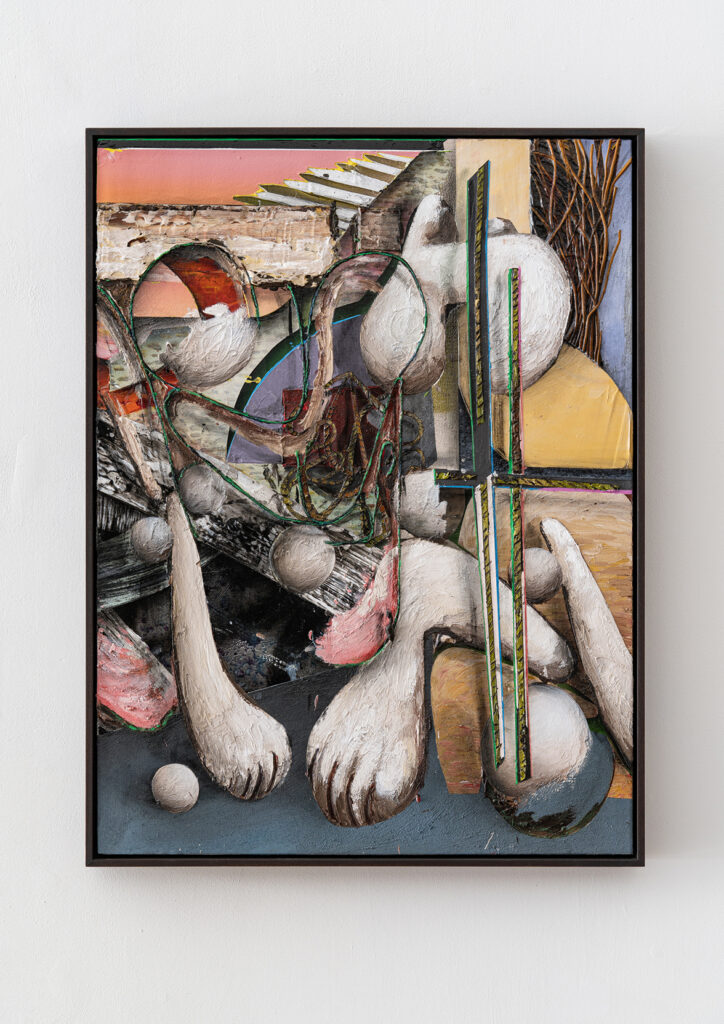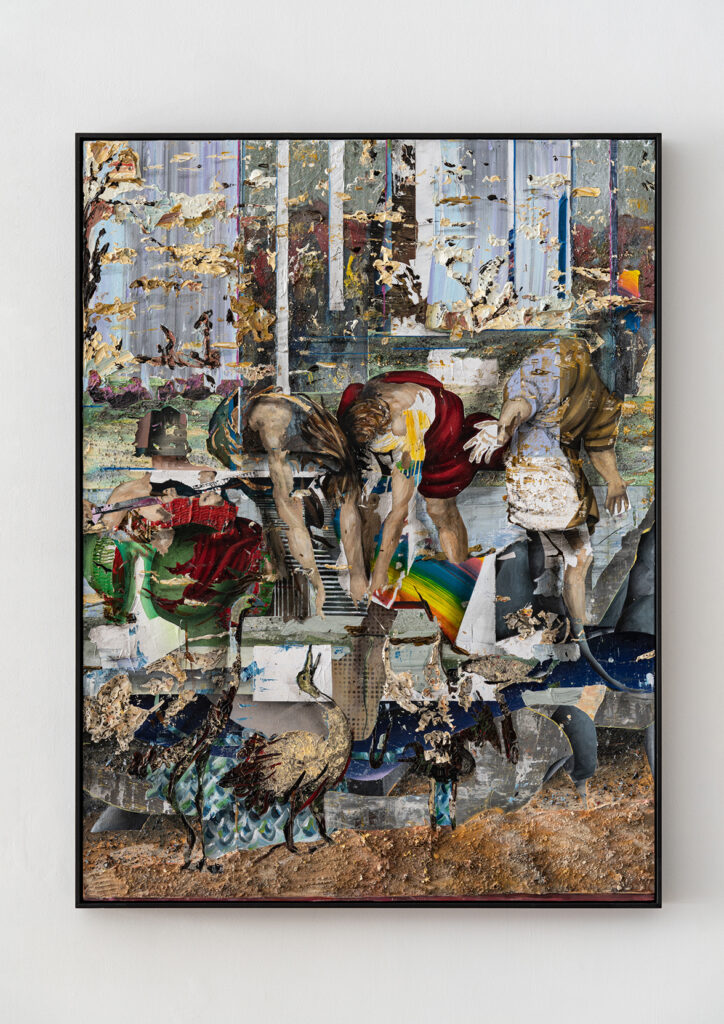by Jonathan Goodman
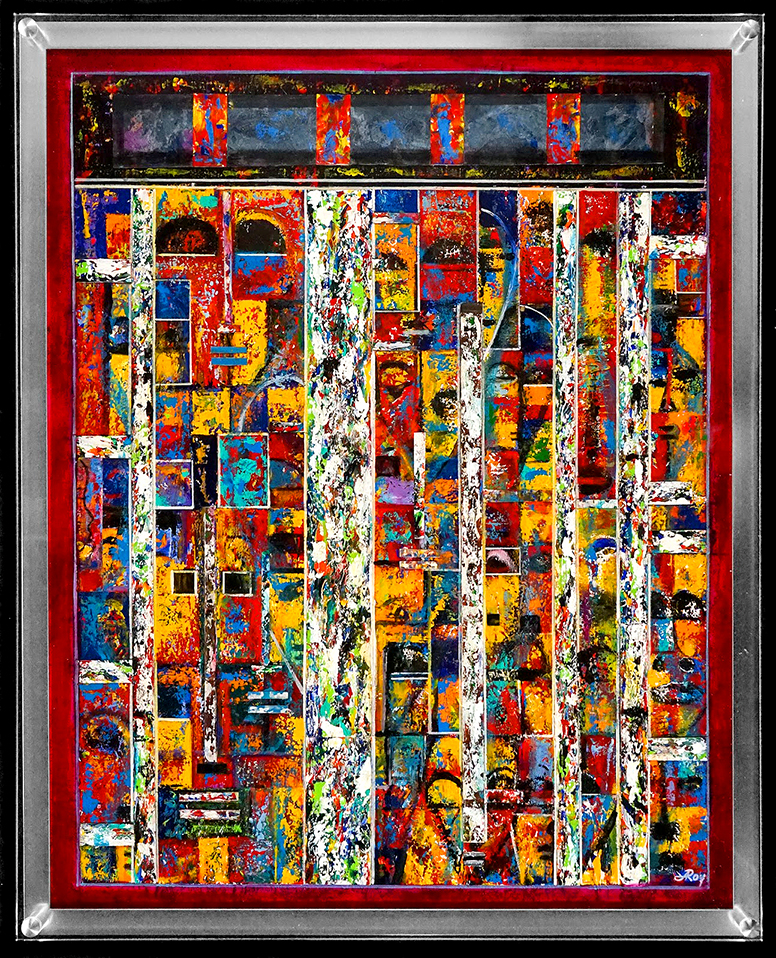
Alvin Roy, a painter of considerable gifts, was born and raised in Houston during the Civil Rights era. He studied first at the Houston Technical Institute, then moved to New York City to further his studies at Pratt Institute. Toward the end of the Vietnam War, he enlisted in the Marines. This decision provided him with the chance to travel and experience other cultures. In Okinawa, Roy studied watercolor techniques with a local master, also internalizing the recognition that the spiritual life of an object is as important as the formal attributes it consists of. Roy has remained in Houston for more than forty years now, using mixed-media assemblage to create bas-relief wall pieces. Jazz, an important influence, occurs in his work in the form of saxophones, keyboards, and colorful patterns that reflect the texture of the music. Roy also turns to Egyptian culture, imaging pharaohs and, also, figures of ancient spiritual archetypes. Most recently, Roy has resorted to mixed-media techniques and collage on paper to explore the quilting tradition in the southern United States and to address the history of the Underground Railroad.
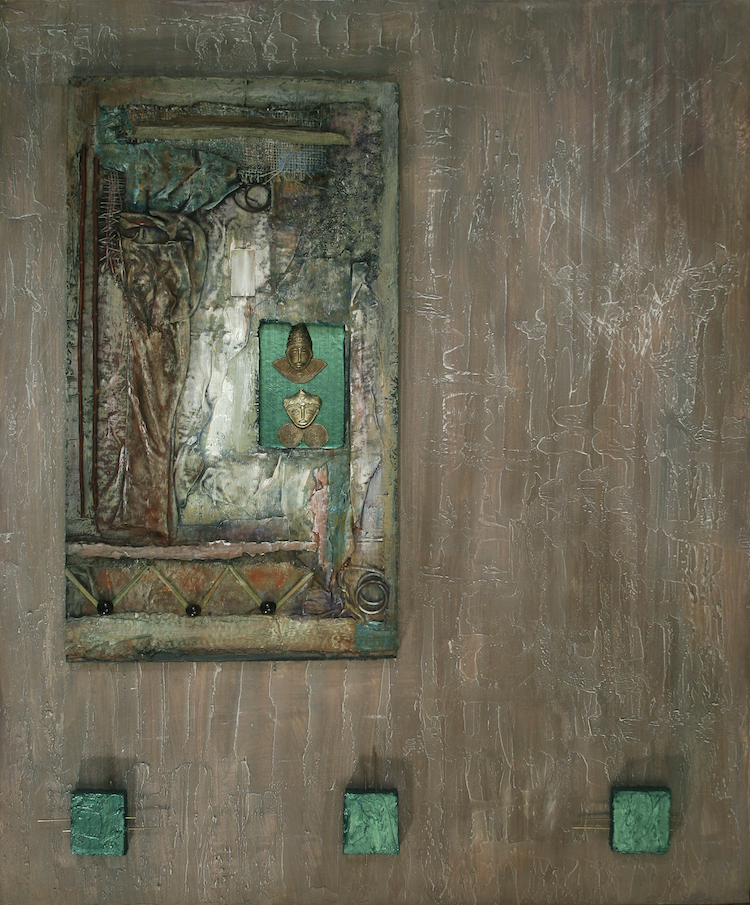
Roy’s formidable energy is evident from the start. His work, at first glance, looks entirely abstract, but the reliefs are more truly described as a mixture of abstract and figurative influences. His recent series, “Talking Heads,” regularly includes white vertical bars, decorated randomly, that divide the large painterly field occurring behind them. Color is important in its own right, but oneiric forms are also found. Eyes, noses, mouths, and, every so often, a full figure can be found in these complex assemblages of abstract shapes, often pieced together as one would find in a quilt. Roy’s colors also are unusually strong; they are dense, often dark, and luminous, as if rising from the night in a dream. His talents are such that he has found a way of connecting with history and culture more by implication rather than by direct illustration. His multi-cultural approach, evident in the combination of forms, materials, and allusions, make him a national artist of note—even when his inspiration is deeply personal.
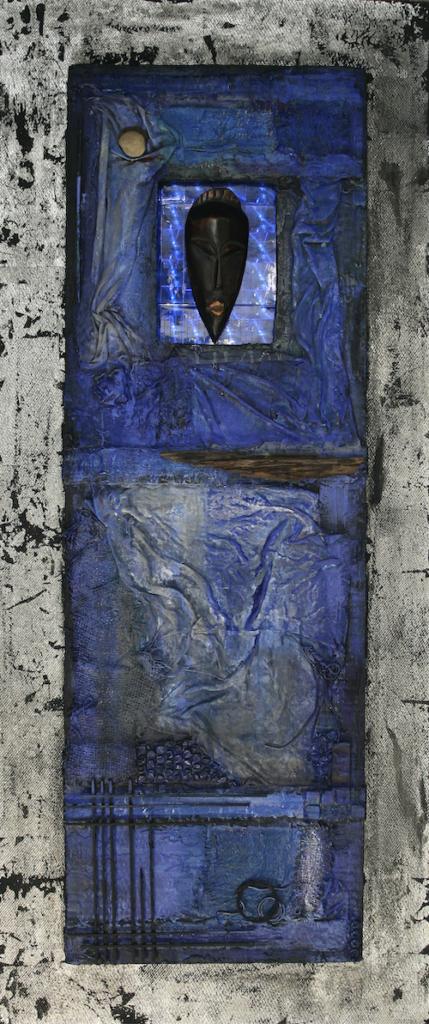
Perhaps the most accomplished element in Roy’s work is his ability to create intricate genres: partly non objective, partly figurative; both sculptural and representational; and measured and free. In many ways, this is the manner in which an innovative exploratory artist works—by merging genres, images, and materials. In Roy’s case, such combinations are made stronger by the framework of history, as well as references to the ancient art of Egypt. We are living in a time of unusual eclecticism, and Roy’s composite efforts make wonderful use of the old and the new. Certainly, the work’s overall impression tends to be one of colorful abstraction, but recognizable figurative elements, sometimes partially hidden by the overall pattern of the paint, also make their way into Roy’s art. One instinctively feels that his historical references structure and deepen the paintings’ ability to communicate. It is not easy to find such a successful mix of histories, and patterns informed by those stories, in works that convey a visionary point of view. Alvin Roy’s work can be viewed in a virtual gallery at:
